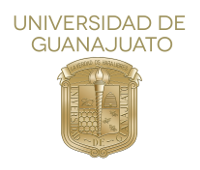Please use this identifier to cite or link to this item:
http://repositorio.ugto.mx/handle/20.500.12059/3946Full metadata record
| DC Field | Value | Language |
|---|---|---|
| dc.rights.license | http://creativecommons.org/licenses/by-nc-nd/4.0 | es_MX |
| dc.creator | Carlos Silva Ramos | - |
| dc.date.accessioned | 2021-02-08T16:09:03Z | - |
| dc.date.available | 2021-02-08T16:09:03Z | - |
| dc.date.issued | 2018 | - |
| dc.identifier.uri | http://repositorio.ugto.mx/handle/20.500.12059/3946 | - |
| dc.description.abstract | La información etnomédica se obtuvo mediante una entrevista semi-estructurada, siguiendo la metodología reportada por Polat (2013) y Zlatković (2014). Mediante esta técnica se entrevistaron a un total de 40 personas pertenecientes a las comunidades de Urireo, Maravatio del Encinal y la Luz (Municipios de Salvatierra, Guanajuato), identificando a un total de 49 especies vegetales. Dichas plantas se agruparon en 13 categorías de padecimientos, donde, la categoría de Inflamación y dolor fue la que mas especies vegetales agrupo. Las especies vegetales que mayor valor de uso tuvieron fueron la Manzanilla, Hierbabuena, ajo y valeriana. Por otro lado las especies vegetales que mayor importancia relativa tuvieron fueron: Siempreviva, Albahaca, Manzanilla, Hierbabuena, Ajo, Toloache y Orégano. Con esto se destaca que la Manzanilla, Ajo y Hierbabuena, tienen una diversidad de uso muy arraigada en la población de estudio. | es_MX |
| dc.language.iso | spa | es_MX |
| dc.publisher | Universidad de Guanajuato | es_MX |
| dc.relation | http://www.jovenesenlaciencia.ugto.mx/index.php/jovenesenlaciencia/article/view/2349 | - |
| dc.rights | info:eu-repo/semantics/openAccess | es_MX |
| dc.source | Jovenes en la Ciencia vol. 4, num. 1 (2018) Verano de la Investigación Científica | es_MX |
| dc.title | Estudio Etnomédico de Tres Comunidades en el Municipio de Salvatierra | es_MX |
| dc.type | info:eu-repo/semantics/article | es_MX |
| dc.subject.cti | info:eu-repo/classification/cti/3 | es_MX |
| dc.subject.cti | info:eu-repo/classification/cti/3299 | - |
| dc.subject.cti | info:eu-repo/classification/cti/32 | - |
| dc.subject.keywords | Etnomedicina | es_MX |
| dc.subject.keywords | Medicina tradicional | es_MX |
| dc.subject.keywords | Plantas Medicinales | es_MX |
| dc.type.version | info:eu-repo/semantics/publishedVersion | es_MX |
| dc.creator.two | Brenda Elizabeth García Mier | - |
| dc.creator.three | Rafael Alejandro Veloz García | - |
| dc.description.abstractEnglish | Ethnomedical information was obtained through a semi-structured interview, following the methodology reported by Polat (2013) and Zlatković (2014). Through this technique, a total of 40 people belonging to the communities of Urireo, Maravatio del Encinal and La Luz (Municipalities of Salvatierra, Guanajuato) were interviewed, identifying a total of 49 plant species. These plants were grouped into 13 categories of the use, where, the category of inflammation and pain was the most vegetable species group. The plant species with the highest use value were Chamomile, Peppermint, Garlic and Valerian. On the other hand, the vegetal species that had greater relative importance were: Evergreen, Basil, Chamomile, Peppermint, Garlic, Toloache and Oregano. This highlights that the Chamomile, Garlic and Peppermint, have a diversity of use very rooted in the study population. | - |
| Appears in Collections: | Revista Jóvenes en la Ciencia | |
Files in This Item:
| File | Description | Size | Format | |
|---|---|---|---|---|
| Estudio Etnomédico de Tres Comunidades en el Municipio de Salvatierra.pdf | 292.2 kB | Adobe PDF | View/Open |
Items in DSpace are protected by copyright, with all rights reserved, unless otherwise indicated.

